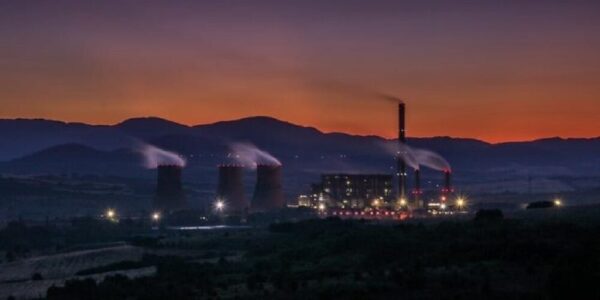ONGC drills for geothermal energy in Ladakh for India’s first such project
State run Oil and Natural Gas Corporation (ONGC) has started drilling to discover energy from the bowels of the earth in Ladakh – an area which lies on the Himalayan geothermal belt.
It has long been reported that Puga Valley in Ladakh’s south eastern part may have significant geothermal energy potential and now assessments have begun for the project’s viability.
ONGC last week started drilling at the remote valley located at an altitude of 14,000 feet and has hit upon high pressure steam at 100o Celsius with a discharge of 100 tonne geothermal energy per hour. The reassured crew is now speeding ahead with the first phase of its geothermal project.
* Click to Follow Voice of Ladakh on WhatsApp *
On February 7, 2021, an agreement for establishing the first geothermal Power Project was announced. Ladakh’s Puga valley was the natural choice. The power plant here will be not only India’s first one but also the highest.
The Chumathang area which is located on the banks of the Indus river was discovered in the 1970s and the Geological Survey of India began probing the region’s capacity for geothermal energy in the 1980s.
The Himalayan Geothermal belt
The collision of the Indian plate with the Eurasian plate gave rise to the Himalayas and caused a huge amount of heating which was trapped beneath the rocks. The resulting Himalayan geothermal belt runs from parts of India, to Tibet, China (Yunnan) and through Myanmar and Thailand. The 150-metre wide region extending for 3000 km in length is believed to have hundreds of geothermal fields that can generate electricity.
Parts of Ladakh have shown evidence of geothermal activity in the form of hot springs, mud pools, sulphur and borax deposits.
Ladakh’s location at the confluence of two continental plates and the availability of rivers and other water sources makes the place a good candidate for geothermal electricity generation. Scientists who have studied the geography say that subsurface temperatures at Ladakh’s Puga are very high. Geothermal reservoirs are characterised by their temperature, since the hotter it is, the more energy is trapped in the rocks and water that emerges as steam can be used to turn turbines. Medium temperature geothermal energy can be used to simply heat buildings by circulating the water that emerges through pipes within the area that is to be heated.
In certain places on earth, heat from the molten core reaches up through the solid mantle and lower crust. This heat raises the temperature of nearby rocks and any water that seeps into the earth. When the water finds its way above through cracks in the earth again, it rises as steam or hotsprings or boiling mud pools. These are abundant in Ladakh. Also a lot of the heat generated stays trapped beneath the ground and these become the reservoirs from where geothermal energy can be tapped.
To generate electricity through this energy powerhouse, water is pumped through borewells over these heated rocks. The resulting steam produced is strong enough to rotate turbines and produce electricity.
When water is pumped over these rocks through a bore well, steam is produced. This steam can rotate turbines and produces electricity. Reykjavik, the capital of Iceland, explores such geothermal hotspots for producing electricity and to run central heating systems of buildings.
Iceland’s capital Reykjavik has been a model at adopting geothermal energy. Reports say that nine out of ten houses in this sparsely inhabited country are powered by renewable, geothermal energy.
Ladakh is not the only region in India with geothermal potential. The ‘Geothermal Atlas of India’ prepared by the Geological Survey of India (GSI) in 1991 has identified more than 300 sites with geothermal potential across India spread across Himachal Pradesh, Gujarat, West Bengal, Chhattisgarh, Maharashtra and Jammu and Kashmir.
As is obvious, geothermal resources are not only found at places where plates converge but also in rifts, ocean island hot spots, and tectonically active areas subject to large-scale extension.
India’s first geothermal project
In the first phase of the project at Puga, ONGC will dig up to 1000 metres below the earth’s surface to tap steam in order to run a one Megawatt plant that would supply the needs of nearby pastoralist communities from Tibet who have been settled at Sumdo and other nearby areas.
In the second stage, drilling will be deepened to explore the potential of the reservoir and finally a commercial scale plat would be set up with a capacity of 250 MW that can supply electricity to far flung areas as well as the defence establishments in Ladakh’s eastern sector where troops are camped throughout the year.

0 Comments